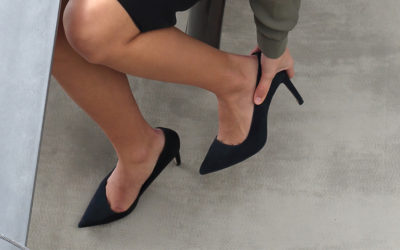Bunionectomy
At Mimbres Memorial Hospital, we know how much bunions can hurt. Even putting on shoes can become difficult, let alone walking comfortably or doing the things you love.
We specialize in bunion surgery (bunionectomy), an outpatient procedure to relieve pain and help correct the condition, so you can get back on your feet.
About Bunions
A bunion is a lump that usually forms at the base of your big toe. It gets progressively larger, sometimes so much that it forces the big toe inward and on top of the next toe. The skin over the bunion may become swollen and sore, while the protrusion can cause intense pain and restrict movement in your toes.
Most bunions form in women, primarily because women may be more likely to wear tight or pointed shoes that cramp the toes. Bunions are also thought to be hereditary and more common as you age. They are often associated with arthritis, and can lead to other foot conditions, including hammertoe and bursitis.
Without the right treatment, bunions can eventually cause debilitating pain and severely damage the toe joint.
Relief Starts Here
We will assess your pain and work closely with you to find the right treatment.
We often start with non-invasive options, such as changing shoes, custom orthotic inserts, anti-inflammatory medication or cortisone injections. But, if those treatments aren’t effective, bunion surgery may be your best solution for relief and to help correct the misshapen foot.
Depending on the severity of your bunion, surgery may involve:
- Removing the swollen tissue from around your big toe joint
- Straightening your big toe by removing part of the bone
- Realigning the long bone between the back part of your foot and your big toe, to straighten out the abnormal angle in your big toe joint
- Joining (fusing) the bones of your affected joint permanently
- Replacing all or part of the joint with an artificial one
Recovery & Follow-Up Care
We usually perform bunionectomy on an outpatient basis, allowing you to go home the same day. You may be fitted with a special boot to help stabilize the foot.
The dedicated care team will closely monitor your recovery. Every situation is different, but most patients resume normal activities within six to eight weeks, with some swelling to be expected in the months after. We may recommend for physical therapy to improve foot strength and range of motion. Since bunions can sometimes return, we’ll also provide the education and support you need to help reduce your risk.
For More Information
Call 575-543-7200
Related Services and Conditions
Podiatry
At Mimbres Valley Medical Center, we understand how debilitating a foot or ankle problem can be. Whether the condition is chronic or acute, if your mobility is compromised because of pain, you should find out what kind of relief is available through a Podiatrist....
Hammertoe
When you’re dealing with hammertoe, every step can hurt. The condition, in which the toe becomes abnormally bent, can also affect your balance and lead to other foot problems without proper care. At Mimbres Memorial Hospital, we can help you find relief. Podiatrists...
Wound Debridement for Diabetes
If you’re living with diabetes, you may be prone to foot problems—including frequent wounds. Getting immediate care for this issue is crucial to preventing or stopping infection and other serious complications, including limb loss. At Mimbres Memorial Hospital, we...



